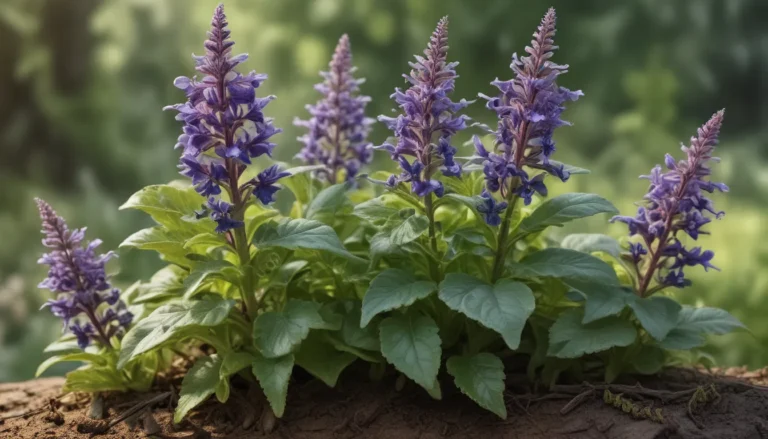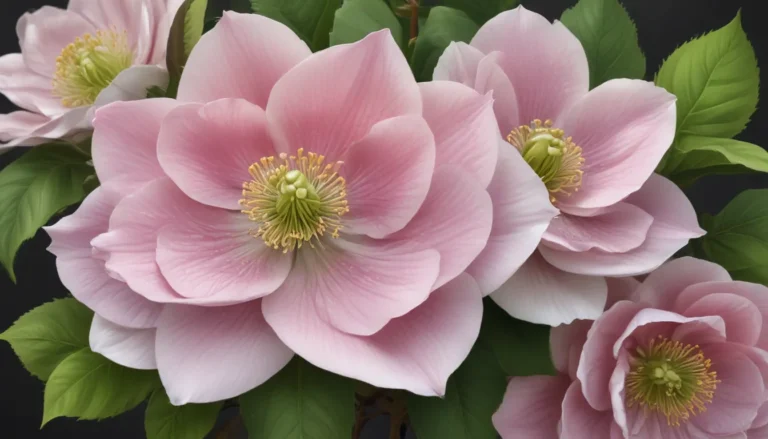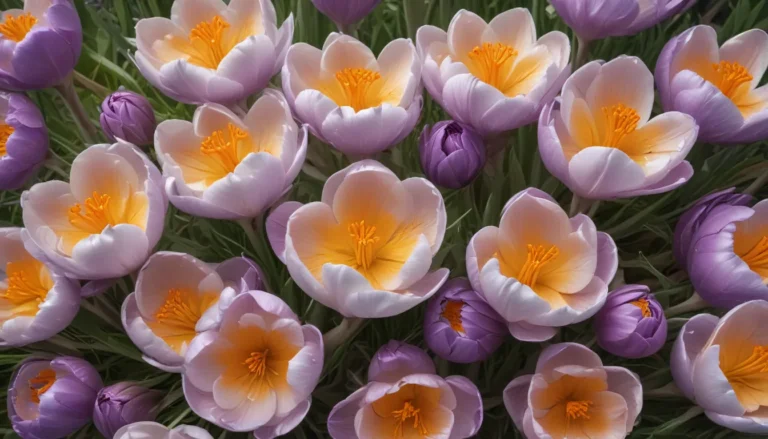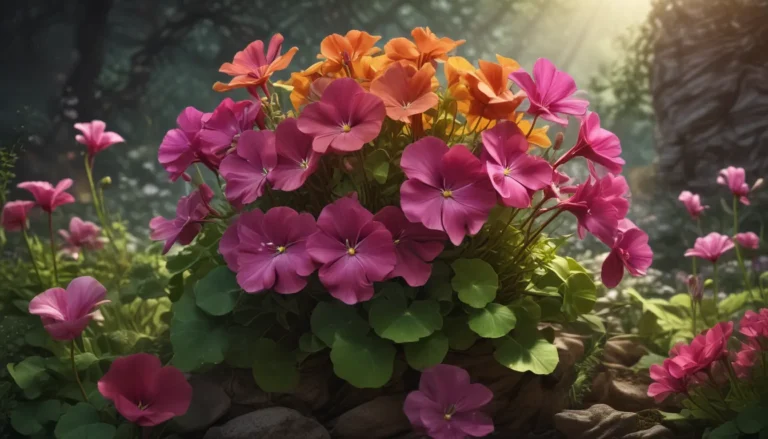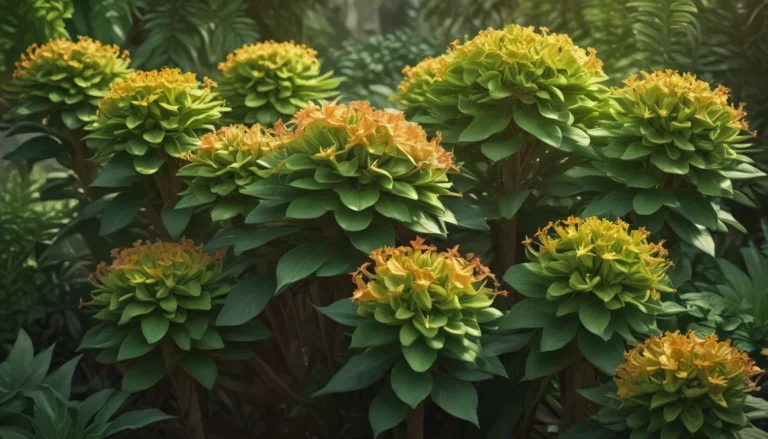The pictures we use in our articles might not show exactly what the words say. We choose these pictures to make you interested in reading more. The pictures work together with the words but don’t take their place. The words still tell you the important facts.
Welcome to the enchanting world of Mexican Hat, also known as Ratibida columnifera, a captivating plant native to North America. With its unique characteristics and rich cultural significance, Mexican Hat has become a beloved favorite among plant enthusiasts and nature lovers alike. Join us on a journey to explore 19 astounding facts about Mexican Hat that will surely spark your curiosity and admiration for this remarkable plant.
Exploring the Beauty of Mexican Hat
Mexican Hat, also referred to as upright prairie coneflower, is a plant like no other. Its name is derived from its distinct flower shape that resembles a traditional Mexican sombrero, adding a touch of whimsy to any landscape. The vibrant colors and long blooming period of Mexican Hat make it a standout choice for gardens, attracting pollinators and providing sustenance for birds. Its resilience and adaptability to diverse climates further enhance its appeal, making it an ideal choice for both experienced gardeners and newcomers alike.
The Rich History of Mexican Hat
Native American tribes have long revered Mexican Hat for its medicinal properties. Historically, it was brewed into teas to alleviate various ailments such as headaches, stomachaches, and respiratory issues. This deep-rooted history of traditional medicine highlights the plant's significance and enduring cultural relevance. Mexican Hat's symbolic meaning in Mexican culture as a representation of joy, abundance, and celebration further underscores its importance in both nature and heritage.
- Mexican Hat, also known as the upright prairie coneflower, resembles a traditional sombrero and has a rich history of medicinal use by Native American tribes, making it a fascinating and culturally significant plant.
- This resilient and adaptable plant attracts pollinators, provides food for birds, and symbolizes joy and celebration in Mexican culture. Its vibrant blooms and long blooming period make it a perfect addition to wildflower gardens and floral arrangements.
Embracing Mexican Hat in Your Garden
As an easy-to-grow perennial, Mexican Hat offers a low-maintenance option for gardeners seeking a versatile and striking addition to their outdoor spaces. Its ability to thrive in arid, drought-prone conditions, coupled with its attractive blooms and self-seeding nature, makes it a popular choice for a variety of garden settings. Whether you're eager to attract beneficial insects, support pollinators, or simply enjoy the beauty of Mexican Hat in full bloom, this plant offers a wealth of benefits and opportunities for exploration.
- Mexican Hat is highly adapted to arid and dry conditions, making it a resilient option for gardeners in regions with limited water availability.
- The vibrant flowers of Mexican Hat serve as a magnet for pollinators, including bees, butterflies, and hummingbirds, providing essential nectar and pollen sources.
Unveiling the Ecological Importance of Mexican Hat
In addition to its aesthetic appeal and cultural significance, Mexican Hat plays a vital role in supporting wildlife and ecosystem health. Its long taproot provides stability and access to deep soil moisture, allowing it to thrive in harsh environmental conditions. The plant's self-seeding nature ensures the continual presence of new growth, benefiting birds with a valuable source of food during winter months. Furthermore, Mexican Hat's role in attracting beneficial insects for natural pest management highlights its valuable contribution to sustainable gardening practices.
- After blooming, Mexican Hat produces an abundance of seeds that serve as a valuable food source for birds, especially during the winter months when food can be scarce.
- The long taproot of Mexican Hat provides stability to the plant and allows it to access deeper soil moisture, contributing to its ability to thrive in challenging conditions.
Celebrating the Versatility of Mexican Hat
Whether used as a decorative element in floral arrangements or incorporated into traditional ceremonies, Mexican Hat offers a range of creative possibilities. Its edible young leaves and flower petals can add a pop of color and flavor to salads, showcasing the plant's versatility beyond its ornamental value. Mexican Hat's adaptability to various climates and its ability to attract a diverse array of pollinators further emphasize its role as a multifaceted and resilient species worth celebrating.
- The Mexican Hat plant is often associated with celebration and festivities in Mexican culture, symbolizing joy, abundance, and cultural heritage.
- Besides attracting pollinators, Mexican Hat also draws beneficial insects such as ladybugs and lacewings, supporting natural pest management in the garden.
Conclusion: Embracing the Beauty and Significance of Mexican Hat
In conclusion, Mexican Hat stands as a symbol of resilience and beauty, embodying the rich history and cultural significance of native plants in North America. From its striking appearance to its ecological benefits and medicinal uses, Mexican Hat continues to captivate and inspire individuals of all backgrounds. Whether you're drawn to its vibrant blooms, intrigued by its historical roots, or inspired by its role in supporting biodiversity, Mexican Hat offers a tapestry of wonders waiting to be explored in your own garden and beyond.
FAQs: Exploring More About Mexican Hat
-
What is the scientific name of Mexican Hat?
Mexican Hat's scientific name is Ratibida columnifera. -
Where is Mexican Hat commonly found?
Mexican Hat is native to various regions in North America, including the central and western parts of the United States. -
What are the unique characteristics of Mexican Hat?
Mexican Hat is known for its distinctive flower shape resembling a sombrero, its long stems, and its ability to reach heights of up to 3 feet. -
Does Mexican Hat require special care when growing?
Mexican Hat is a hardy plant that thrives in full sun and well-drained soil, requiring minimal maintenance and being relatively drought-tolerant. -
What is the cultural significance of Mexican Hat?
Mexican Hat holds cultural importance, particularly in Native American traditions, where it is used in ceremonies and symbolizes protection and strength. -
Can Mexican Hat attract pollinators?
Yes, Mexican Hat is a popular choice for attracting bees, butterflies, and hummingbirds with its vibrant flowers. -
Are there any medicinal uses for Mexican Hat?
In addition to its historical medicinal uses by Native American tribes, Mexican Hat has been known for its antimicrobial and anti-inflammatory properties. -
Can Mexican Hat be grown in containers?
Mexican Hat can thrive in containers as long as they provide ample space for the plant's stems to grow freely. -
How long does Mexican Hat bloom?
Mexican Hat typically blooms throughout the summer months, offering weeks of colorful flowers. -
Can Mexican Hat be used for cut flowers?
Mexican Hat's vibrant blooms make it a popular choice for cut flower arrangements, adding a unique and eye-catching element to bouquets.
The wonders of Mexican Hat await you, offering a tapestry of beauty, resilience, and cultural significance to explore and celebrate in your own garden. Embrace the enchantment of this remarkable plant and witness firsthand the magic and allure of Mexican Hat in full bloom.

